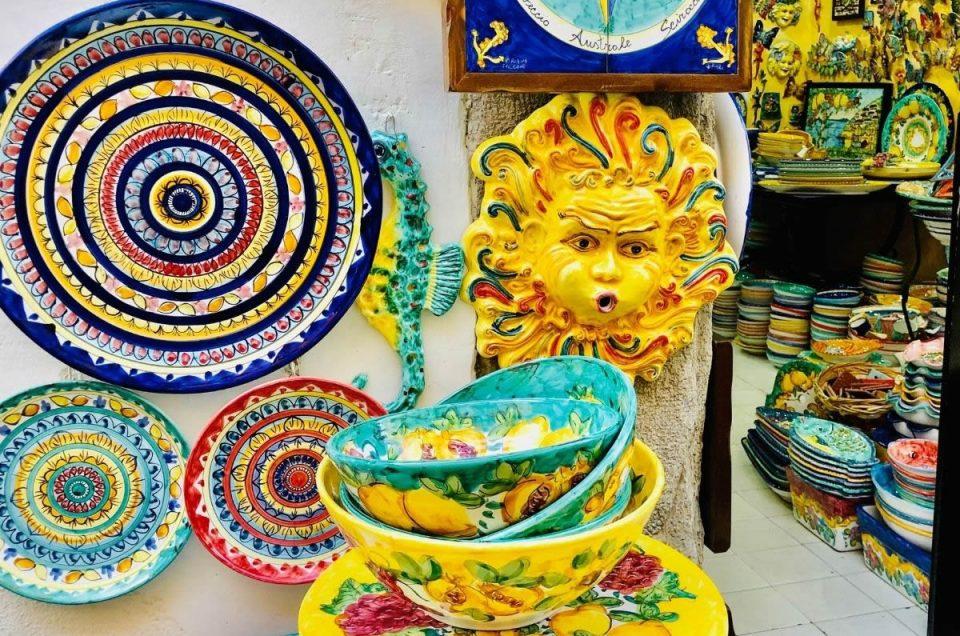Vietri sul Mare, is one of the most important pearls of the Amalfi Coast and one of the most enchanting villages in the world. It is certified by UNESCO with the seal of World Heritage for its beautiful landscapes and its artistic and cultural heritage.
This charming coastal town is famous for the production of ceramics, one of the most excellent of the Campania region that has made the city famous all over the world.
Let’s find out together why these ceramics are so acclaimed…
Between the nineteenth and twentieth centuries, the artisan production of ceramics became a real brand of quality. With a thousand-year tradition, today this production continues in the workshops of the village.
In every corner of the city its possible to find ceramics, in craftsman’s workshops and also in the walls of houses and churches.
The most remarkable feature?
Vietri’s products are unique, there are no duplicates.
The choice is endless, each shop is different in the style and decoration of its dishes, limoncello glasses, amphorae, knick-knacks etc. All the colors of the Amalfi Coast seem to meet in Vietri’s glazes and details. The predominant colors are the yellow and the golden orange of the citrus, the deep blue of the sea, the bright green of the woods. The predominant elements are lemons, grapes and the famous donkeys, the symbol of Vietri ceramics.
Why has the donkey become the main symbol of the Amalfi Coast?
In the past the donkey, was the most used means of transportation in everyday life by the inhabitants of the Coast, it was used to transport materials or simply to move between the different villages. In short, one couldn’t live in the Coast without “the donkey”.
In the 1920s a community of German ceramists moved to Vietri, enchanted by the beauty of the coast, they began to capture every little detail in their creations.
Inevitably this animal became the undisputed protagonist of many works of potters and then passed down the history as the symbol of this charming coastal town.
The production process
The production process is very long and complex, the raw material of these small masterpieces is Salerno’s precious clay. It is worked by hand and then cooked in huge ovens that reach the highest temperatures, then the works are immersed in a white enamel, left to dry, and at the end, decorated entirely by hand.
web.comune.vietri-sul-mare.sa.it.







